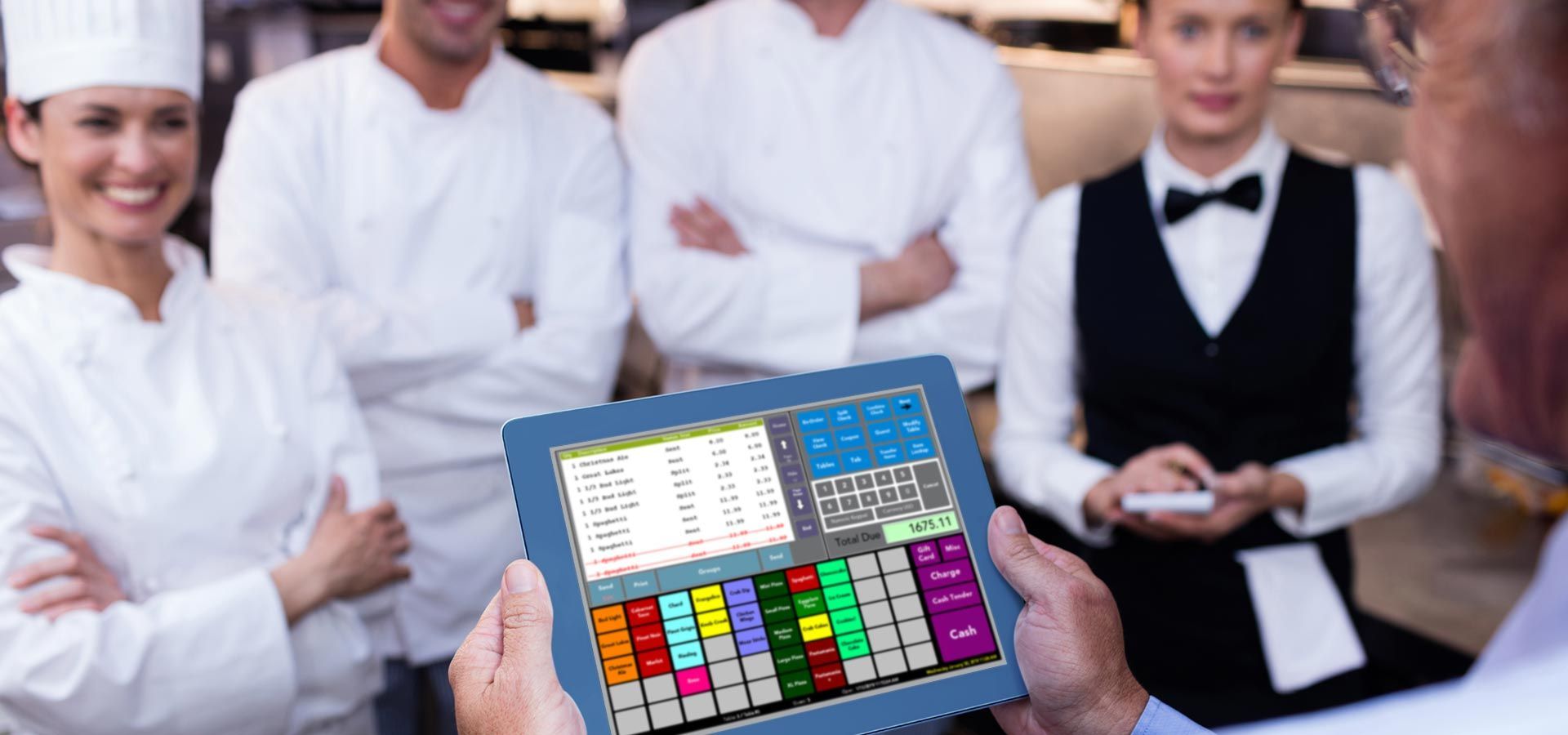POS And Payment Processing Made Simple
The payment processing industry is highly competitive—and confusing—for merchants who try to make sense of the process that makes it possible to accept payments with their POS.
With so many alternatives available, making a smart choice for your POS, payment processing partner, and authorized dealer can make a difference for the future of your business.
The Impact of Rising Costs on Processing Fees
Rising costs present a difficult challenge for restaurant owners and managers to control. According to the National Restaurant Association, post-pandemic restaurant recovery has grown significantly since 2021. Much of the increase is due to inflation, which means higher costs are here to stay.
The National Restaurant Association’s research on the restaurant recovery showed menu prices at restaurants and bars went up by well over 7% in 2021 alone. Higher prices on food and beverages mean higher credit card processing costs.
“When adjusted for surging menu price inflation, restaurant sales are, in fact down from where they were before the pandemic, for the first time in several months.”
When small business owners understand payment processing and how it impacts their profitability, authorized dealers can confidently recommend the integrated processing partner and POS combination that sustains their business.
Many restaurant owners try to figure out the maze we call payment processing instead of turning to a trusted and
authorized dealer to guide them. Let’s review the four essential questions to which every merchant should know the answer.
1. How does payment processing work with a POS?
Are you still relying on paper and pen to take and total orders?
When staffing is a critical issue, a reliable point-of-sale system is essential for any restaurant's profitability and overall success. In addition to taking food and beverage orders, payment processing is one of the primary functions of a bar and restaurant POS system.
Every time a server takes an order, the POS system sends that order to the kitchen and stores that order for processing as a transaction at checkout.
2. What if Customers Prefer to Pay with cash?
Cash is king, but credit cards are convenient! There are several different payment types a POS system might accept:
- Cash
- Online credit card payments through an online food ordering system
- Credit cards (magstripe)
- Chip cards (credit cards with an embedded chip)
- Debit cards
- Contactless payments, such as tap or a mobile wallet (e.g., Google Pay or Apple Pay)
Now that people are more accustomed to contactless payment, it makes sense to streamline your operations with a point-of-sale system.
3. What if a merchant prefers their current merchant service provider?
What if you prefer your current payment processor? An adaptable POS (like Total Touch POS) allows merchants to maintain their existing payment processor and merchant services agreements.
This might make sense in the short-term, but have you taken a look at the fees you get charged every time a customer uses a credit card to place an order?
Compare processing fees with a free rate quote to learn how a POS system like Total Touch integrates natively with Electronic Merchant Systems through Total Touch Payments. The benefit of a restaurant management system like Total Touch that integrates natively with EMS for payment processing is that you’ll spend less time communicating back and forth between different providers if any issues arise.
With 24/7/365 US-based technical support, restaurant managers can have peace of mind that you’ll always have access to support if you need it.
Ask your
Authorized Dealer how Total Touch integrates with gift card, loyalty programs, and merchant services that help you increase profit and grow your business.
Get a free credit card processing rate analysis today!
4. How does payment processing work?
How payment processing works is the $10,000 question! Here’s the simple answer:
There are three elements to processing payments: the customer, the merchant, and the technology
1. The Customer:
The customer pays for their meal using a credit or debit card. Their bank has to approve the payment and give them the money to pay your restaurant. In the customer’s case, the bank is the issuing bank.
2. The Merchant:
A merchant account is a bank account that allows you to accept payments via credit or debit card. The merchant is the business accepting credit or debit cards. The merchant agreement is between a company, the bank, and a payment processor. Before funds get deposited in the merchant’s account, they must go through the payment processor.
3. The Technologies
Two technologies between a merchant and the customer facilitate payment processing.
Payment Gateway
The first technology is the payment gateway, a platform that connects the merchant’s received payment to the network that processes the payment. The payment gateway allows online communication between the two banks that handle the transaction.
The Merchant Service or Payment Processor
The second technology is the merchant service or payment processor. The payment processing is where the majority of the work happens. A merchant’s payment processor manages the transaction by transmitting information from the customer’s credit card and bank to the merchant’s bank via the processing network.
The payment processor is a mediator between the customer’s bank, the merchant's bank, credit card networks, and any other parties needed to complete successful credit card payments. An example of a merchant service provider is Electronic Merchant Systems, with mobile payments, ecommerce payments, and text/QR code payment options.
As you can see, understanding how the process works make choosing the best payment processing and POS integration for your restaurant or bar easier.
Remember, you don’t have to make this important decision on your own. There are dozens of highly-qualified dealers who will guide you through the uncertainty of choosing a POS to being confident you made the right choice for your long-term success.
Choosing the right on-site, cloud hybrid restaurant management system and POS, processing partner, and support partner can make managing your business easier and allow you to provide customers memorable dining experiences. There is no better time than now to take the next step in growing your business.



